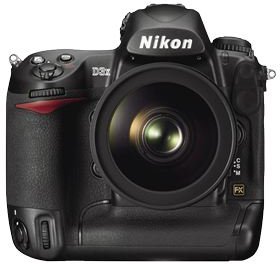Amateur Photography: Tips for Those New to Digital Photography
Image Capture

The first thing that those entering into amateur photography have to understand is how the basic imaging processes work. This is not to say that amateur photographers need to know the science behind digital imaging, but they do need to know how to negotiate the proper exposure for their images. The aperture decides how much light is let in, the shutter speed determines how fast the shutter opens and closes to capture the image and the ISO dictates how the sensor is going to interpret the light.
These three elements, in conjunction with the amount of light you create or allow for in a given space, are going to determine how your image looks. The best amateur photography tip to follow is to play around with your DSLR camera at first to get a visual sense of how the iris works, how the different shutter speeds allow in light and deal with motion, and how the ISO sensitivity blocks out light or allows in grain to the image.
Lighting
Most working in amateur photography will be happy just to get an image that is in focus, but the reality is that lighting makes photography. Instead of simply going for broad light areas, such as overcast days or evenly lit rooms, begin negotiating areas that have a much more high contrast light. Begin shooting at high noon or with artificial lighting kits that allow you to position the light in the area. After a while you will get a sense of how light interacts with a subject and what kind of lighting you like for a given situation. This does not always require a lot of orchestration on your part, really just finding places where you can have a nice play between light and dark.
Organization
Digital photography is not as difficult to deal with as film photography during the editing phases, but you still have to manage the files. Digital photography users tend to take a large number of photos since they do not have expensive film stock, but they still have to store these files. Creating an organized platform on your home computer where your amateur photography can be broken down into subcategories is the best method. This is especially important for your workflow if you are editing in a program like Adobe Photoshop.
Cleaning
It may seem like common sense, but a lot of amateur photography is ruined because the photographer did not keep their camera clean. Lenses especially can get dirty, and dust or debris on this glass can show up in the final image. Outside particles can get inside the DSLR camera itself and interfere with the sensor, which can be a much more significant problem than a lens that needs to be wiped down. The best option is to use a small blower to clear out debris from inside the camera as well as a microfiber cloth for the lens itself.
References
Source: Author’s own experience
Image Credit: Nikon.com
This post is part of the series: Learning Digital Photography
Different articles to teach you about, or inform you about educational opportunities around, digital photograpy.